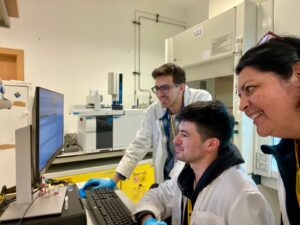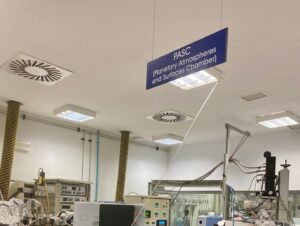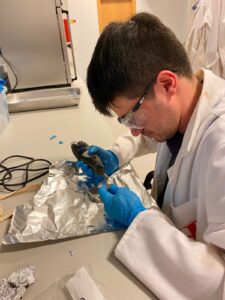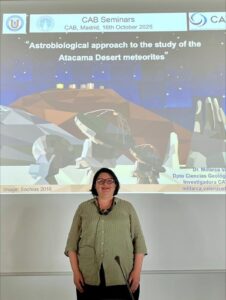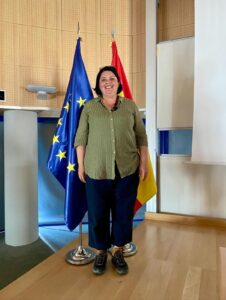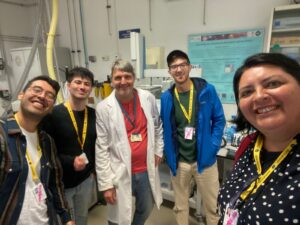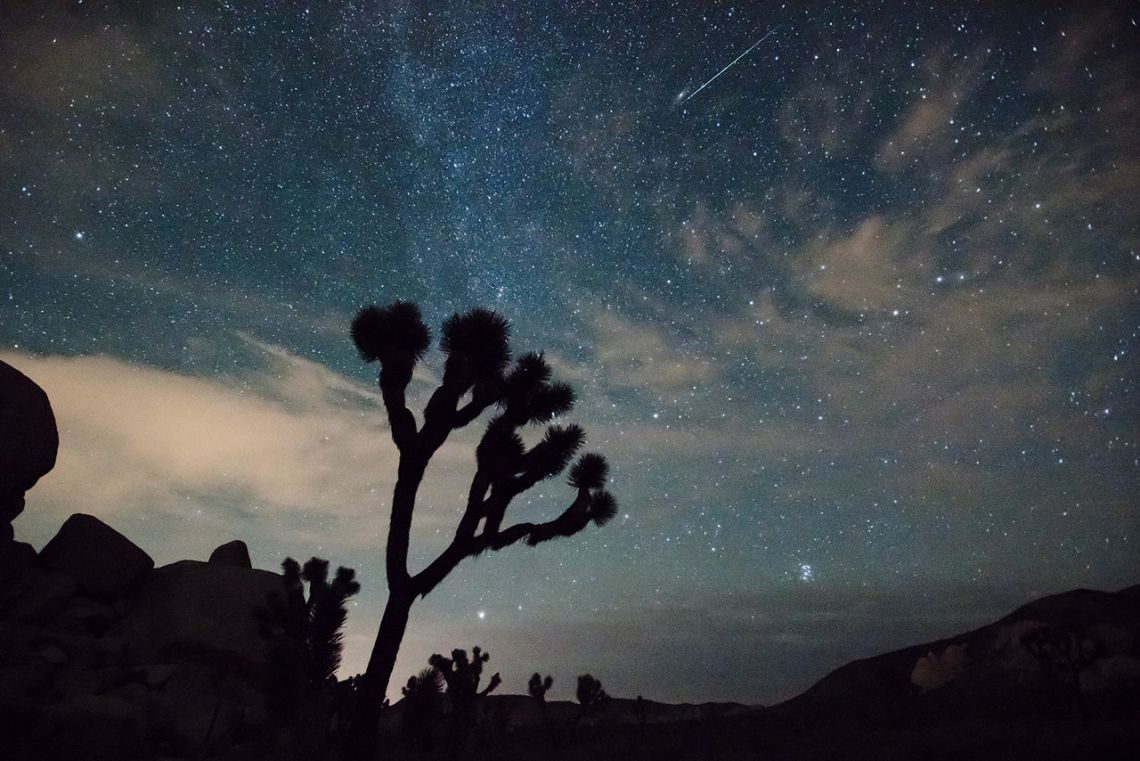
CATA researcher strengthens international ties during visit to the Center for Astrobiology in Madrid
Millarca Valenzuela, Associate Researcher at CATA and academic at UCN, made a scientific visit to the Center for Astrobiology (CAB) in Madrid to initiate research collaborations on meteorites and astrobiology.
Geologist and Associate Researcher at the Center for Astrophysics and Associated Technologies (CATA) and academic at the Universidad Católica del Norte (UCN), Millarca Valenzuela, recently visited the facilities of the Center for Astrobiology (CAB) in Madrid, Spain, with the aim of establishing collaborations in the analysis of meteorites from the Atacama Desert and sharing the advances of CATA’s Area 6 of research: Exoplanets and Astrobiology.
During her stay, the geologist worked mainly with specialists from the Laboratory of Biogeochemistry of Extreme Environments, Dr. Daniel Carrizo and Dr. Laura Sánchez García, to perform for the first time in that laboratory a technique for extracting soluble organic matter from meteorites, mainly amino acids, from samples of carbonaceous chondrites provided by CATA/UCN doctoral student Kevin Soto, under her supervision. Soto is writing his thesis on these samples and will remain at CAB for two months learning this new technique.
This information is important to obtain, given that this type of meteorite may hold the keys to the origin of life on our planet and perhaps on Mars, having scattered this organic matter from its initial composition through impacts in the early stages of the formation of the planets in the Solar System.
Supported by the Center and her colleagues in the Exoplanets and Astrobiology area, the researcher toured the CAB’s laboratories and facilities with the aim of learning firsthand how this institution generates cutting-edge knowledge in astrobiology.
“For CATA’s Area 6, this scientific and technical visit to an international astrobiology center was one of the objectives proposed for the first years of this new period for the Center,” said the UCN academic.
International links and collaboration
One of the main achievements of this visit was to formalize a scientific collaboration for the study of primary organic matter (originally from meteorites) in carbonaceous chondrites, as well as microbial colonization in ordinary chondrites.
During her stay, Valenzuela also interacted with prominent CAB researchers, including Dr. Olga Prieto-Ballesteros, head of the Planetary Geology Laboratory; Dr. Jesús Manuel Sobrado, from the Planetary Environment Simulation Laboratory; and Dr. Armando Azúa, from the Department of Planetology and Habitability.
According to the CATA geologist, Dr. Azúa “contributed valuable ideas on how to improve the database of physical parameters to understand the colonization of meteorites by microorganisms in the Atacama Desert.”
Valenzuela also gave a talk entitled “Astrobiological approach to the study of Atacama Desert meteorites,” in which he presented CATA’s scientific work, Area 6’s lines of research, and advances in astrobiology being developed in Chile. In her presentation, she addressed the entire process of researching meteorites in the Atacama Desert, from their collection and classification to the analyses that allow us to understand the early evolution of the planets. She also outlined future campaigns to search for meteorites and micrometeorites in Antarctica, with the aim of expanding our knowledge of the flow of extraterrestrial material that reaches Earth.
Projection for Chilean science
The researcher emphasized that this collaboration opens up new opportunities to strengthen CATA’s astrobiological development, enhancing the group’s capabilities and promoting links with institutions of scientific excellence at the international level.
“It gives us access to specific analytical techniques and researchers with extensive experience in astrobiology, applied to the analysis of organic matter soluble in rocks or meteorites, which are currently unavailable in Chile. It also inspires us to imagine new types of studies by closely observing the science being done in CAB laboratories,” Valenzuela explained.
Finally, the academic praised the support of CATA and Area 6 in making this experience a reality, noting that “CAB is an important benchmark in science that we want to continue developing. Its work is an inspiration and a model that drives us to plan new research and collaborations that strengthen our science in Chile,” concluded Millarca Valenzuela.
Recent news
-
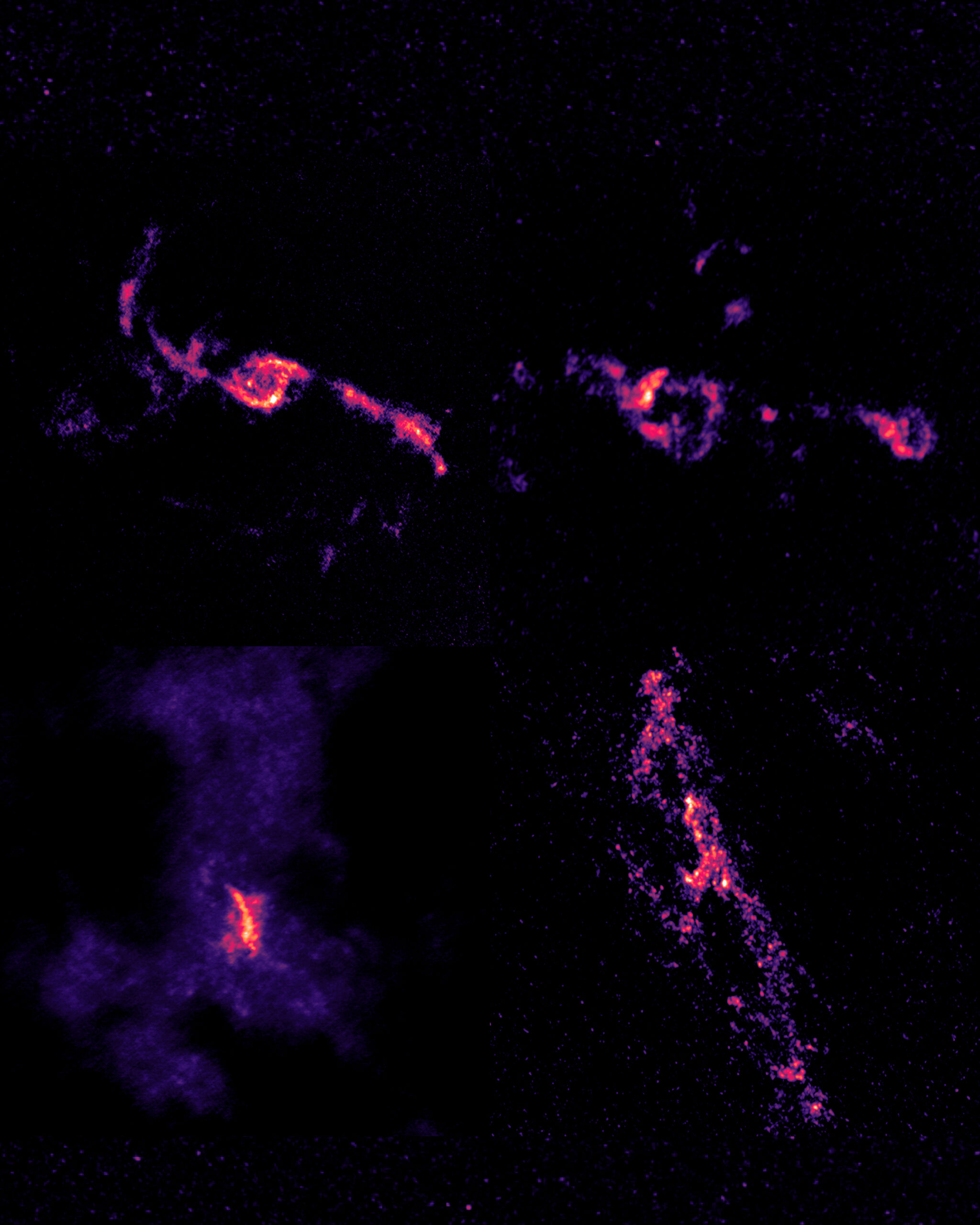 Publicado el: 22/12/2025International study reveals that black holes feed selectively
Publicado el: 22/12/2025International study reveals that black holes feed selectively -
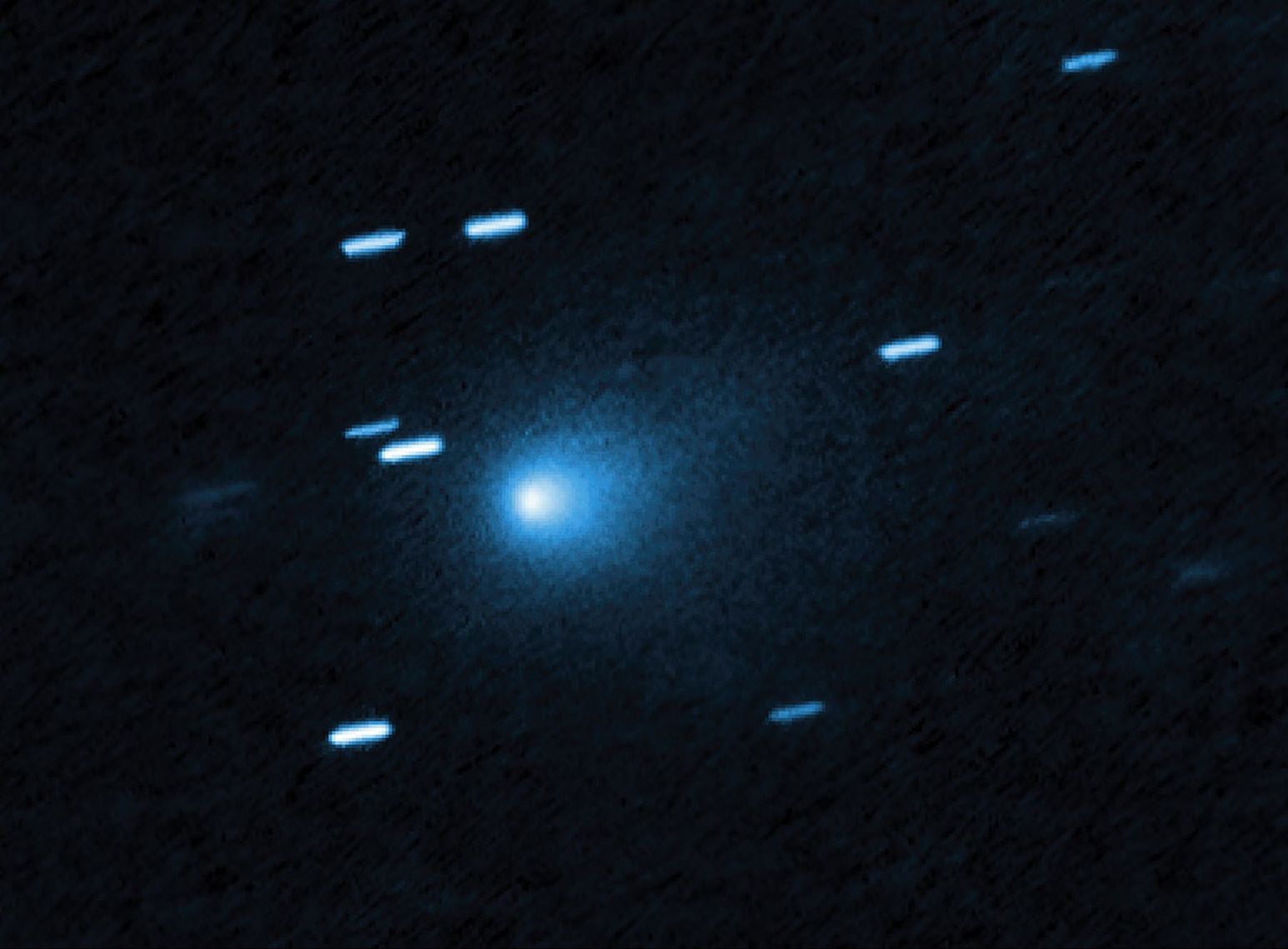 Publicado el: 20/12/20253I/ATLAS: the interstellar comet approaching Earth and what is known about it
Publicado el: 20/12/20253I/ATLAS: the interstellar comet approaching Earth and what is known about it -
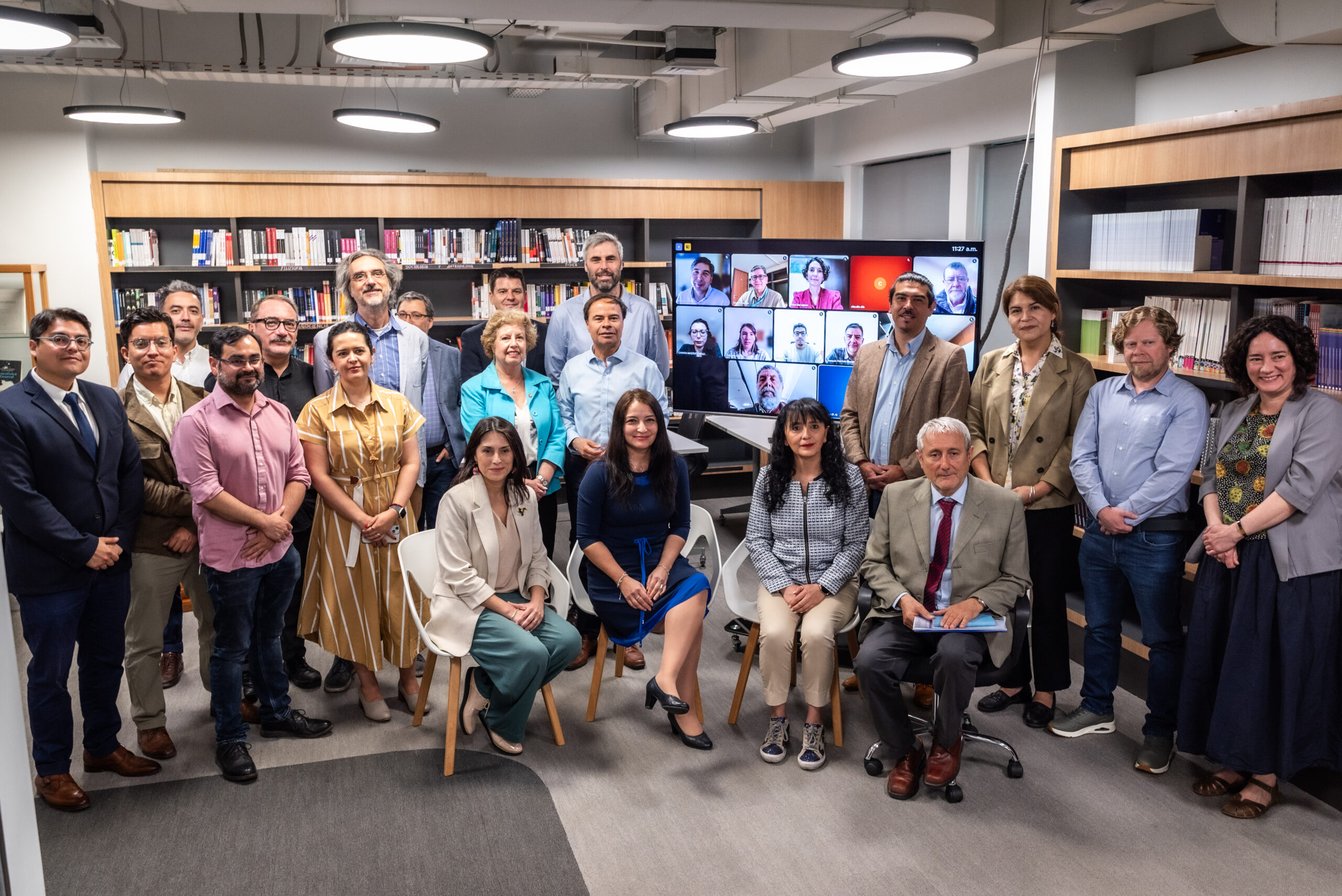 Publicado el: 18/12/2025Ministerial Advisory Committee for Astronomical Observation submits its final report
Publicado el: 18/12/2025Ministerial Advisory Committee for Astronomical Observation submits its final report -
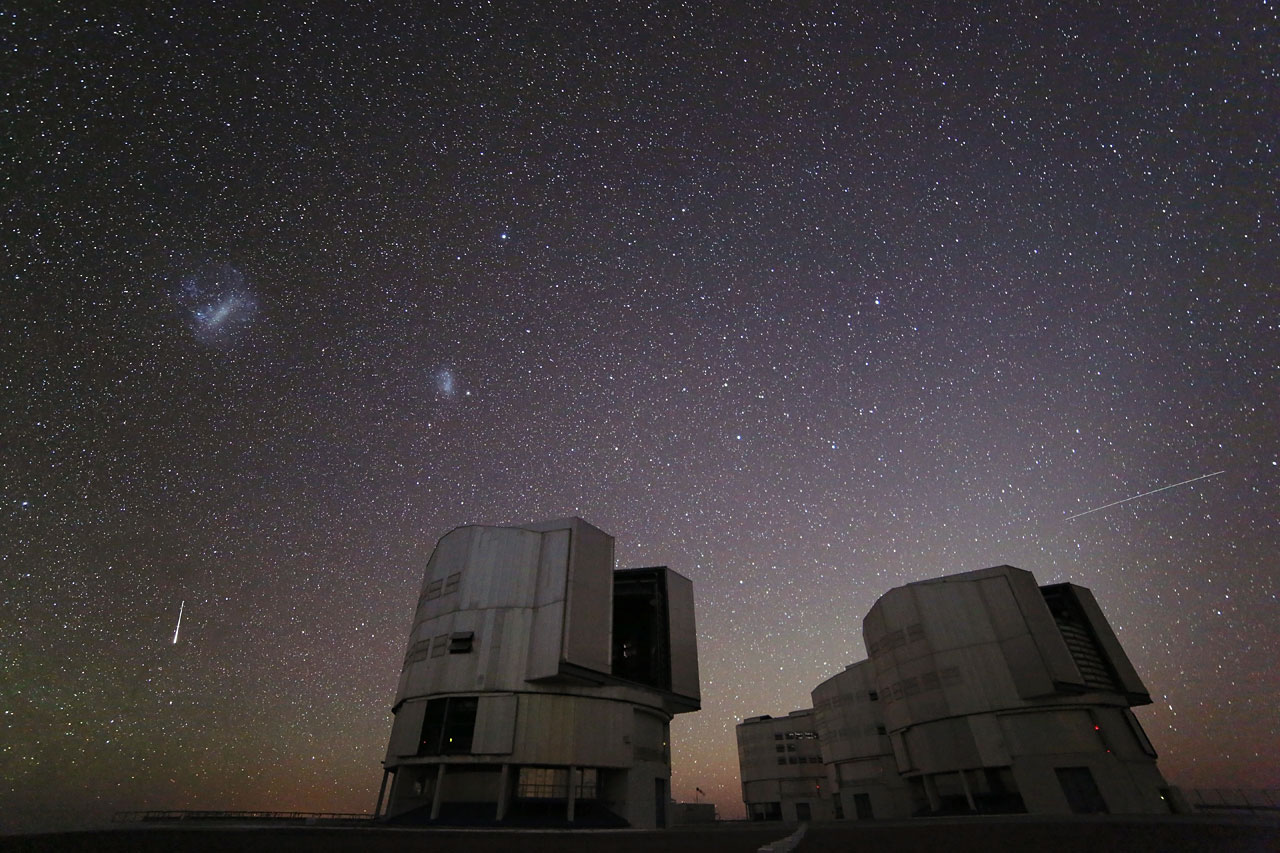 Publicado el: 13/12/2025Geminids 2025: facts and how to observe the last meteor shower of the year
Publicado el: 13/12/2025Geminids 2025: facts and how to observe the last meteor shower of the year -
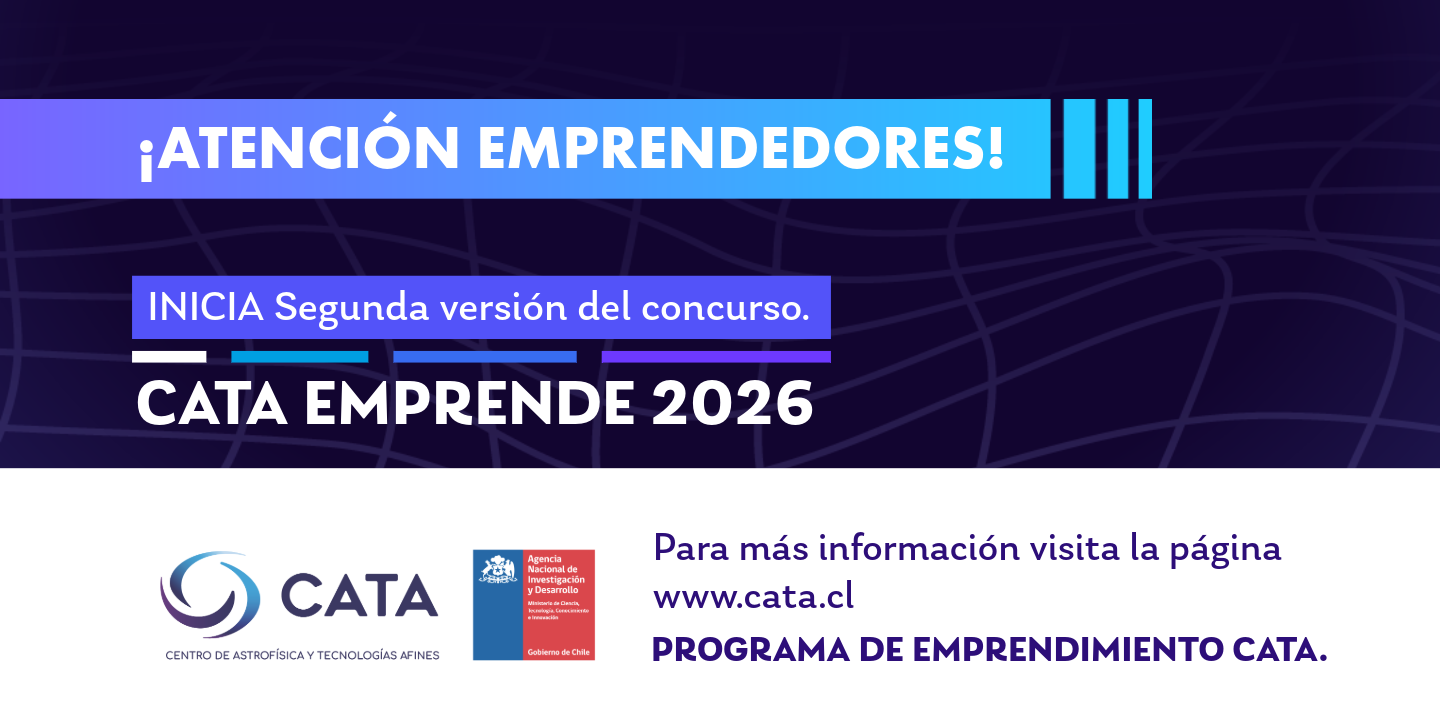 Publicado el: 12/12/2025Call for applications for the CATA Emprende 2026 program now open
Publicado el: 12/12/2025Call for applications for the CATA Emprende 2026 program now open
Categories list
- Acknowledgments 21
- Astrobiology 6
- AstroCluster 1
- Black holes 20
- Corporativo 58
- Cosmology 5
- Descubrimientos 23
- Disclosure 74
- Exoplanets 14
- Extension 7
- Galaxies 22
- Galaxies formation 6
- Inter y Transdisciplina 4
- Local Universe 17
- Publications 6
- Sin categorizar 34
- Solar System 23
- Stellar formation 8
- Technology 16
- Technology Transfer 18

